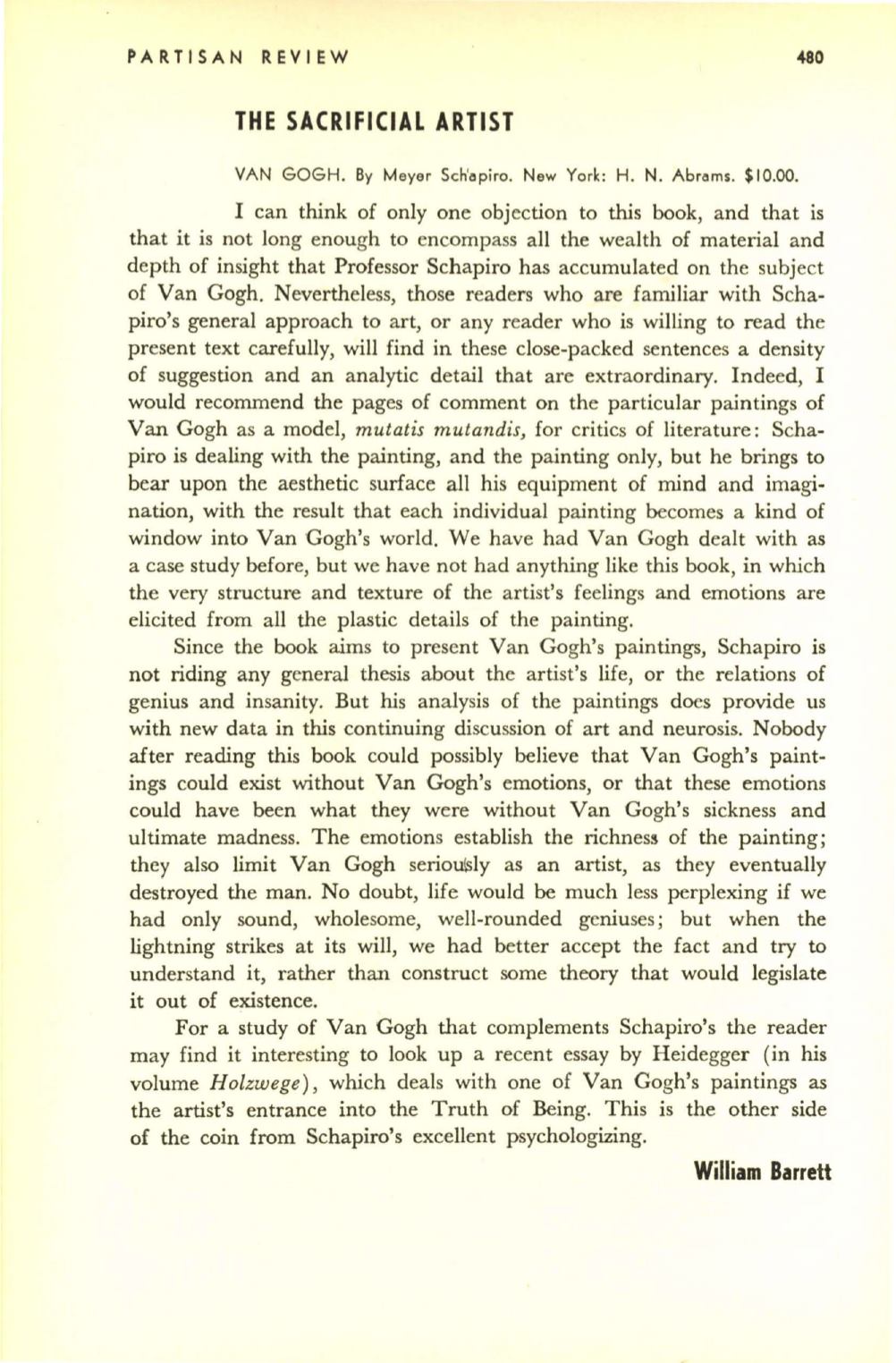
PARTISAN REVIEW
480
THE SACRIFICIAL ARTIST
VAN GOGH. By Meyer Sch'opiro. New York: H. N. Abroms. $10.00.
I can think of only one objection to this book, and that is
that it is not long enough to encompass all the wealth of material and
depth of insight that Professor Schapiro has accumulated on the subject
of Van Gogh. Nevertheless, those readers who are familiar with Scha–
piro's general approach to art, or any reader who is willing to read the
present text carefully, will find in these close-packed sentences a density
of suggestion and an analytic detail that are extraordinary. Indeed, I
would recommend the pages of comment on the particular paintings of
Van Gogh as a model,
mutatis mutandis,
for critics of literature: Scha–
piro is dealing with the painting, and the painting only, but he brings to
bear upon the aesthetic surface all his equipment of mind and imagi–
nation, with the result that each individual painting becomes a kind of
window into Van Gogh's world. We have had Van Gogh dealt with as
a case study before, but we have not had anything like this book, in which
the very structure and texture of the artist's feelings and emotions are
elicited from all the plastic details of the painting.
Since the book aims to present Van Gogh's paintings, Schapiro is
not riding any general thesis about the artist's life, or the relations of
genius and insanity. But his analysis of the paintings does provide us
with new data in this continuing discussion of art and neurosis. Nobody
after reading this book could possibly believe that Van Gogh's paint–
ings could exist without Van Gogh's emotions, or that these emotions
could have been what they were without Van Gogh's sickness and
ultimate madness. The emotions establish the richness of the painting;
they also limit Van Gogh serioU\Sly as an artist, as they eventually
destroyed the man. No doubt, life would be much less perplexing if we
had only sound, wholesome, well-rounded geniuses; but when the
lightning strikes at its will, we had better accept the fact and try
to
understand it, rather than construct some theory that would legislate
it out of existence.
For a study of Van Gogh that complements Schapiro's the reader
may find it interesting to look up a recent essay by Heidegger (in his
volume
H olzwege)
,
which deals with one of Van Gogh's paintings as
the artist's entrance into the Truth of Being. This is the other side
of the coin from Schapiro's excellent psychologizing.
William Barrett


